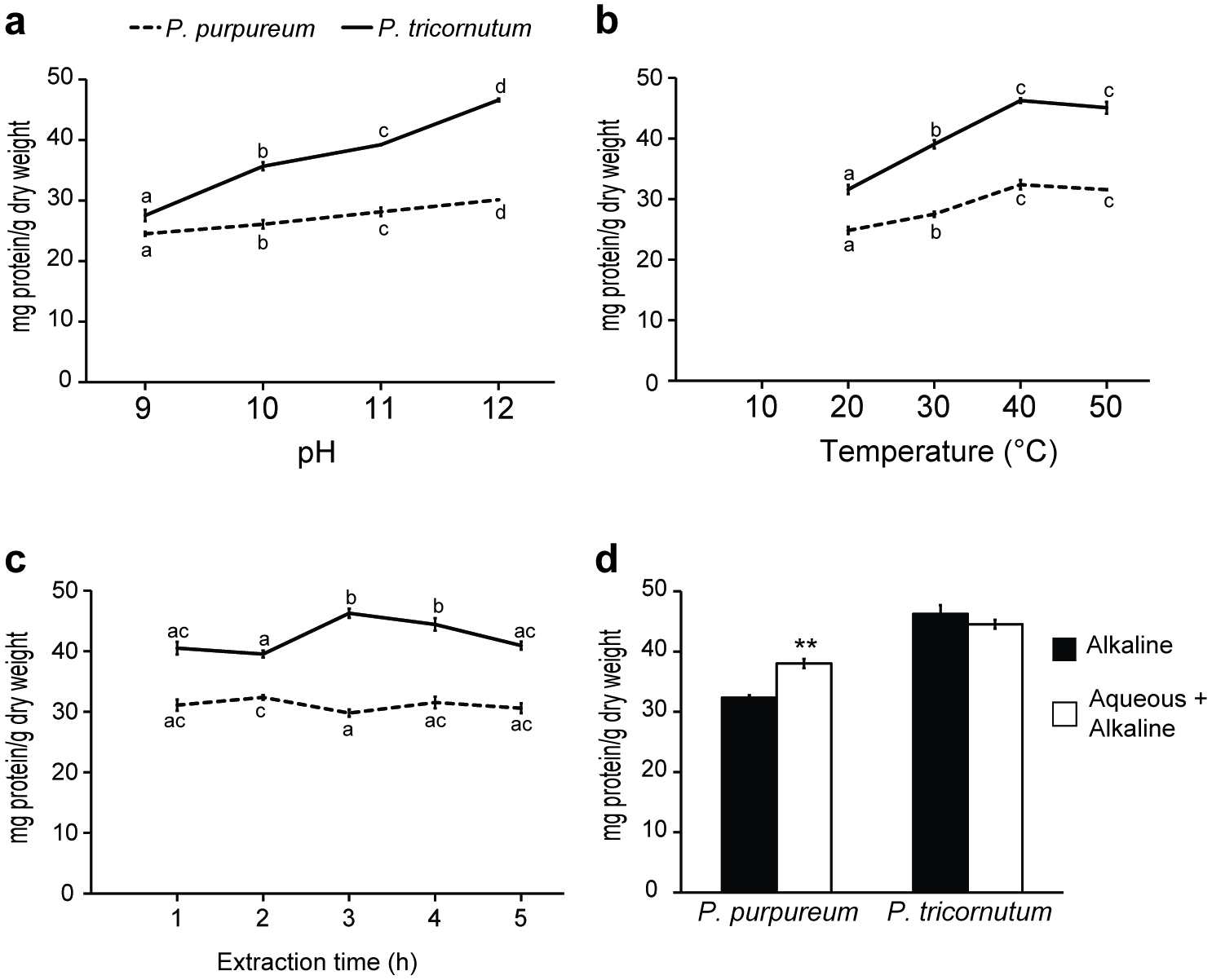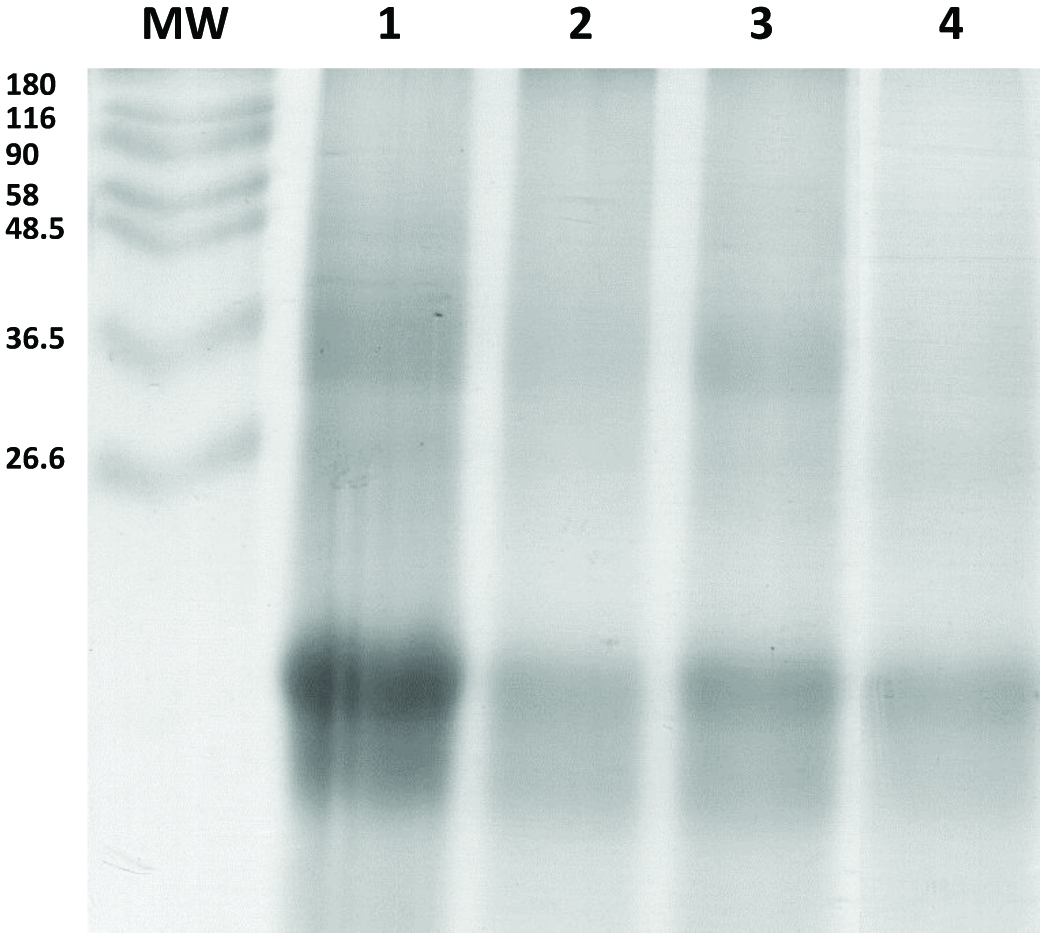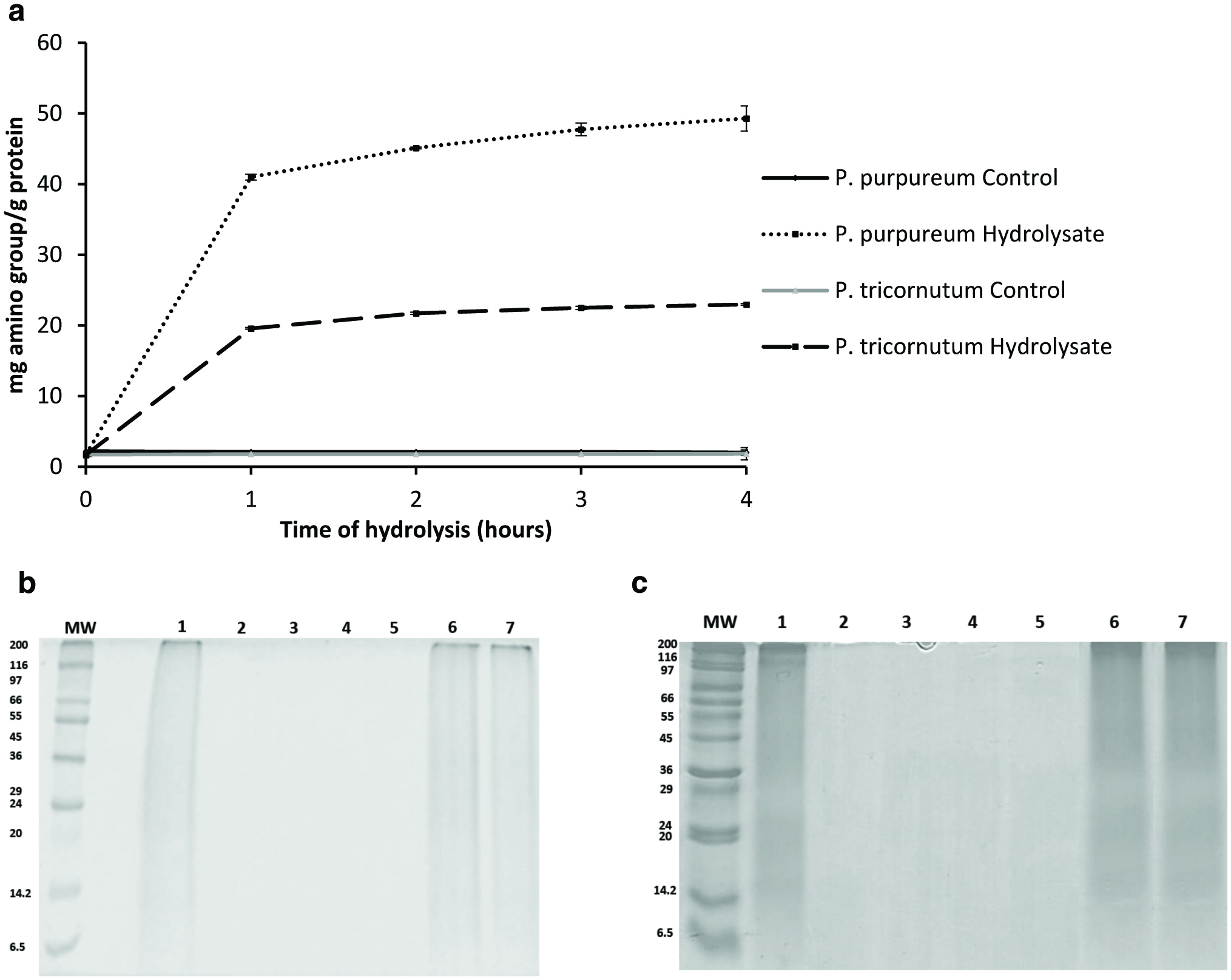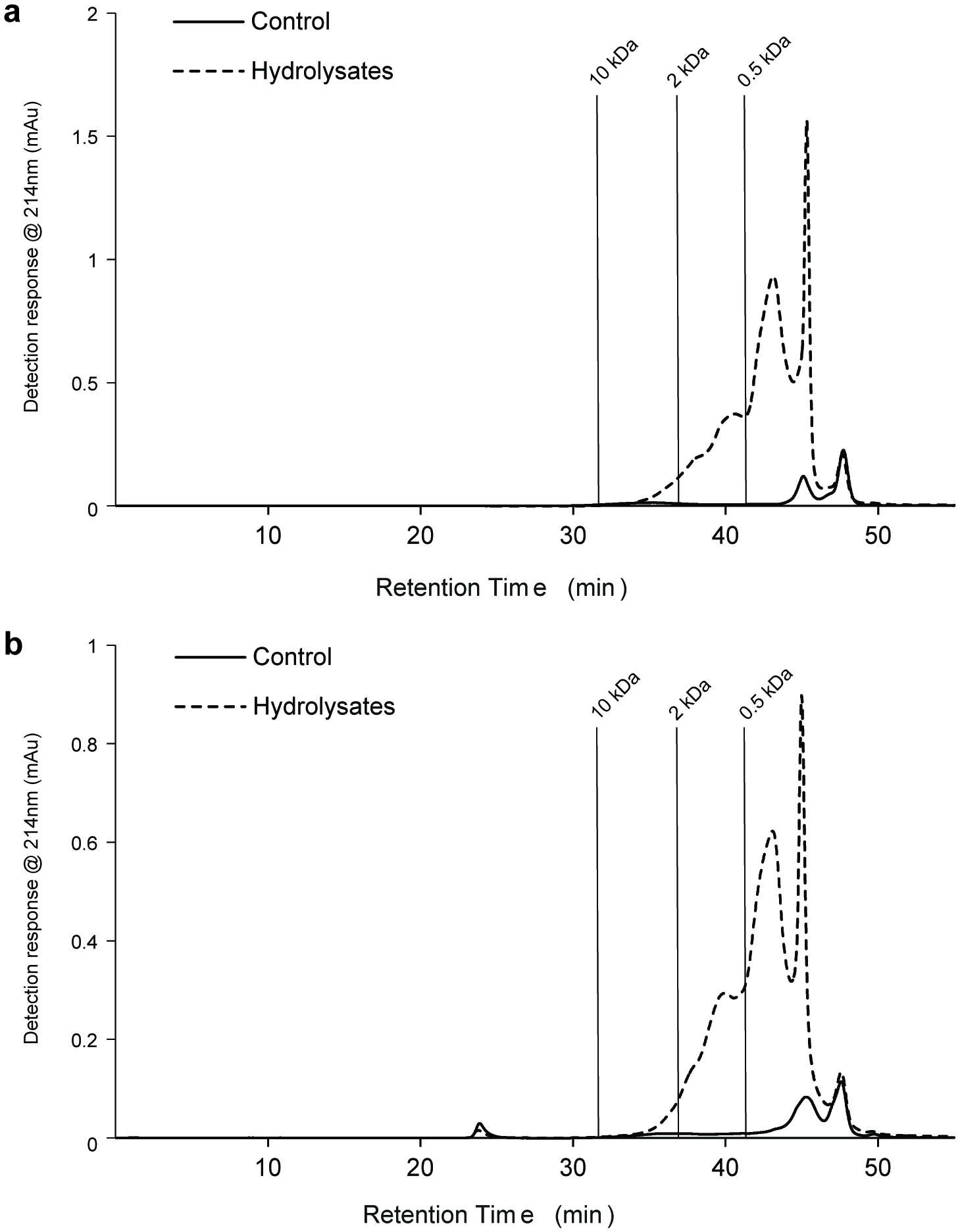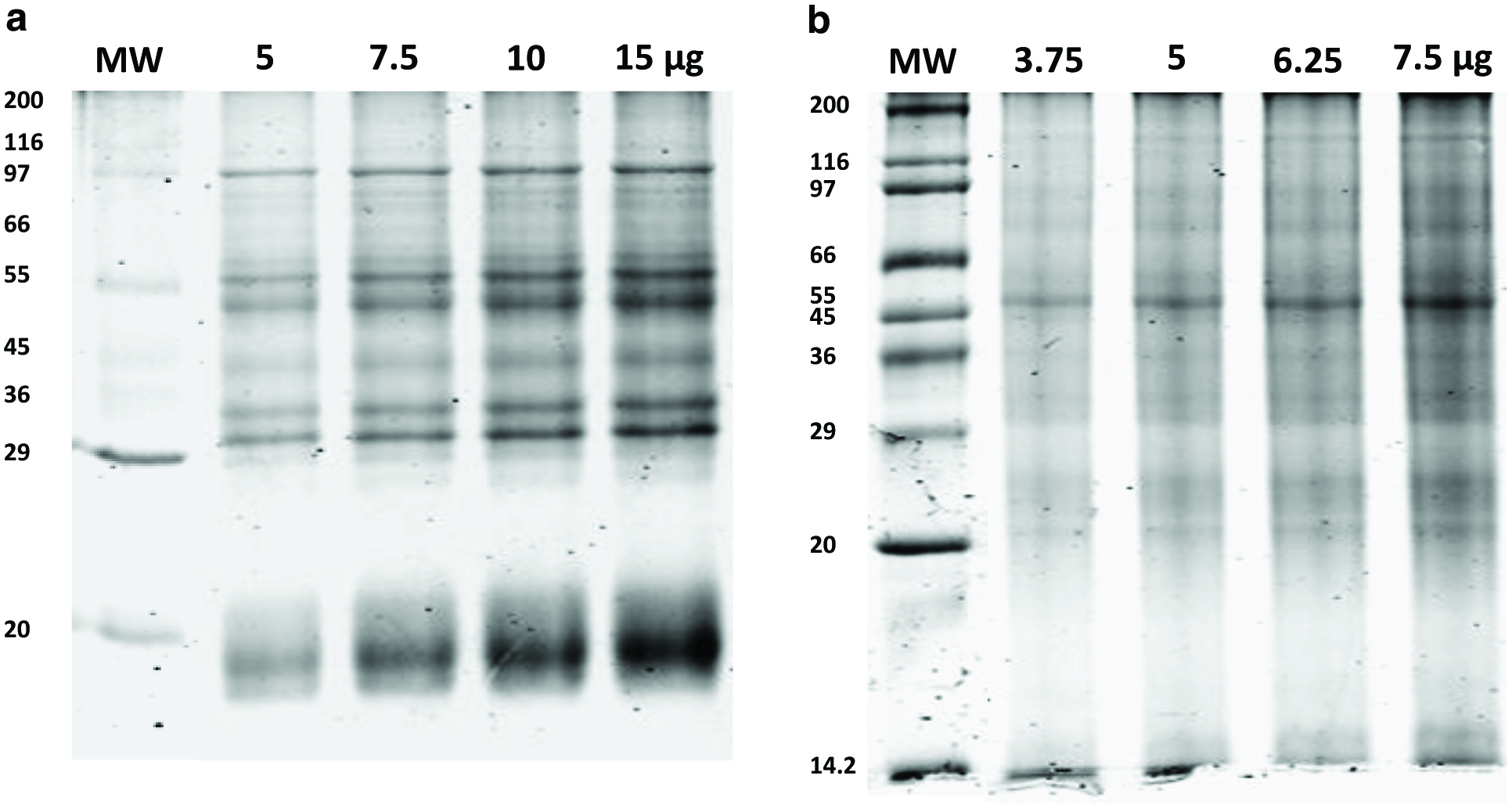
Sodium dodecyl sulphate polyacrylamide gel electrophoresis (SDS-PAGE) profiles of proteins extracted from milled freeze-dried microalgae.
(a) 5.0, 7.5, 10.0 and 15.0 μgof Porphyridium purpureum proteins were loaded in lanes 2 to 5. (b) 2.5, 5.0, 7.5, and 10.0 μg Phaeodactylum tricornutum proteins were loaded in lanes 2 to 5. The molecular weight markerswere loaded in lane 1.